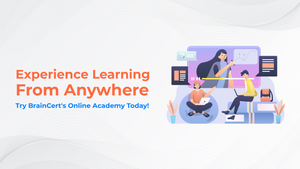Continuous growth is a key factor for the success of any Learning Management System (LMS). However, this growth takes work and requires careful management and planning. An effective LMS will require strong continuity to ensure that it can continue to increase its user base and develop new features. This article will explore how an LMS can use continuity to foster growth and development, helping it become more successful over time.
One way in which an LMS can create continuity is by creating a sense of community within its user base. By encouraging collaboration between users and providing support and resources to help them with their learning goals, an LMS can build loyalty among its users. The more they feel connected to the platform, the more likely they are to recommend it to others or seek out additional content or services from the platform itself.
Unlocking Growth
Learning management systems (LMS) are becoming increasingly popular among businesses of all sizes. An LMS can help organizations improve their training and development, as well as manage learning materials effectively. However, many organizations struggle to unlock the full potential of their LMS.
To make the most out of their investment in an LMS, it's important for organizations to understand how they can utilize the platform to its fullest capabilities. This includes leveraging analytics and insights to identify areas of improvement, integrating with other software solutions to boost productivity, and setting up customized user experiences that cater to different types of users. Additionally, automating certain tasks within the system can save time and resources while ensuring a consistent user experience across multiple departments or locations. By taking these steps, businesses will be able to maximize their return on investment in an LMS and unlock growth opportunities for their organization.
What is Continuity?
Continuity in Learning Management Systems (LMS) is an important concept to understand for those involved in the creation and delivery of modern digital learning experiences. It refers to the seamless flow of activities and information between different elements within a course, enabling learners to move through their learning journey efficiently, without disruption or confusion.
By prioritizing continuity, LMS providers are able to ensure that learners have a consistent experience regardless of where they are within their course material. This helps ensure that learners remain engaged with their learning process as they transition from one activity or lesson to another. It also enables instructors to more effectively track learner performance data and adjust content accordingly in order to better meet individual needs. Ultimately, continuity contributes significantly towards creating an effective and successful online learning environment.
The Benefits of Continuity
Continuity in Learning Management Systems (LMS) is essential for any educational institution. By maintaining a consistent LMS, students, teachers and administrators can enjoy the many benefits of continuity. The first benefit of continuity in an LMS is that it provides consistency for students and teachers. By allowing them to use the same system year after year, students are able to learn more quickly and become familiar with their platform, while teachers have access to all previous student data which can help inform teaching decisions. Additionally, as new features become available within an LMS over time, users can take advantage of these changes without needing to switch platforms or relearn how to use a different software system. Continuity also enhances collaboration within institutions by facilitating communication between various departments and educational stakeholders.
Implementing a Strategy for Continuity
Educational institutions are always looking for ways to improve the way they teach their students. Implementing a strategy for continuity in Learning Management Systems (LMS) is one such measure that can help aid academic success.
A successful continuity program should be built on three pillars: consistency, ongoing support and flexibility. Ensuring a consistent approach across all courses, providing centralized technical support and creating an environment that allows instructors to adapt quickly and easily will create an effective learning experience for both teachers and students alike.
Continuity initiatives within an LMS can lead to reductions in administrative costs, improved student outcomes, better course offerings and increased efficiency within the institution as a whole. By creating a comprehensive approach to learning management systems with continuity strategies in place, educational institutions can ensure a high-quality learning experience for everyone involved.
Overcoming Challenges with Continuity
Learning Management Systems (LMS) have been gaining traction in the world of education, providing a necessary foundation for educators to communicate with students and deliver content. One key challenge that institutions face is ensuring continuity in the LMS environment, allowing for flexibility and scalability over time.
For many organizations, the lack of continuity is often due to inadequate technology or poorly managed infrastructure that fails to meet their changing needs. To ensure successful implementation and longevity of an LMS solution, it is important to create a roadmap that outlines goals and objectives while taking into account organizational restrictions such as budget or personnel limitations. A comprehensive plan should also include strategies on how best to prepare staff members to use the new system effectively while also providing ongoing support where needed.
Conclusion: Unlocking Growth Potential
In conclusion, understanding and unlocking growth potential is a critical component of any business and should be viewed as an investment. The development of effective strategies and processes for understanding customer needs, as well as the implementation of tactics to meet those needs, will help to ensure that your business is positioned for sustainable growth. By focusing on the areas discussed in this article, organizations can set themselves up for success and create a solid foundation for future growth.









